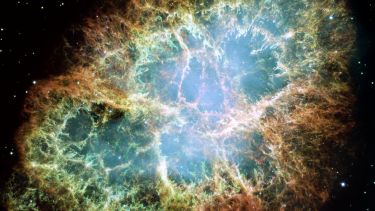Supernovae
The evolution of massive stars involves a number of complicated physical processes and knowing the state of star just before it explodes provides the ultimate test of our understanding their evolution.

PhD students: Adam Singleton
Supernova progenitors
All massive stars are expected to end their lives as in a core-collapse induced supernova explosion. The evolution of massive stars involves a number of complicated physical processes and knowing the state of star just before it explodes provides the ultimate test of our understanding their evolution.
The nature of the progenitor star also tells us about the extreme physical condition in which the explosion was triggered.
We are also interested in the direct observation of the progenitors in archival observations of galaxies, together with late time observations (once the supernova has faded) to verify whether the suspected progenitor did indeed explode.
Unfortunately, very few progenitors have been detected in pre-supernova images, so complementary techniques are necessary to investigate the nature of the progenitor, either associated stellar populations or the immediate nebular environment. Constraints from environmental information have been the focus of an archival study.
The geometries of supernovae
Although the actual explosion trigger lasts only a matter of a few seconds, the nature of the explosion is imprinted in the structure of the rapidly expanding supernova.
When we look at the remnants of nearby supernovae, that are hundreds or thousands of years old, we can see they have complicated shapes and geometries.
We are interested in directly measuring the shapes of young (only a few days old) supernovae, in other galaxies, in large numbers, to understand the range of extreme physical processes required to blow up a star.
Spectropolarimetry is the only technique that is capable of probing the 3D structures of distant supernovae, and we have pioneered the application of this technique to these explosions.
Current PhD opportunities in this topic
No projects are offered in this topic this year. PhD opportunities are available in the other astronomy subgroups though.
